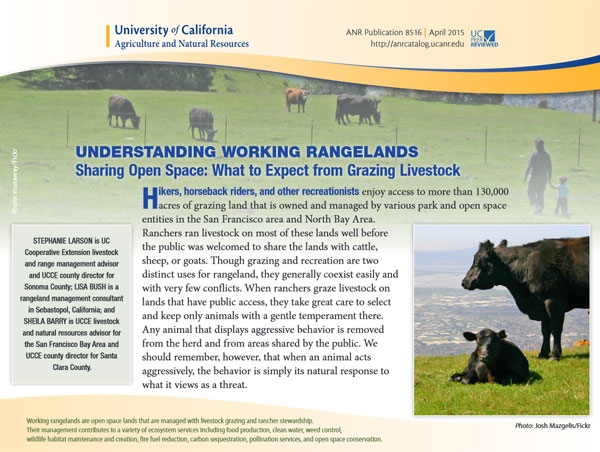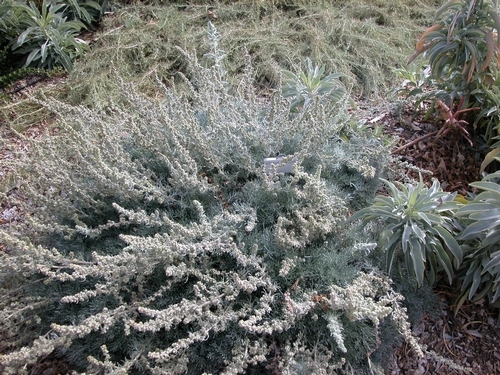From the UC Blogosphere...
UC ANR publication helps hikers co-exist with cows
Hikers, cyclists and runners can learn to enjoy nature alongside grazing cattle with information from a new UC Agriculture and Natural Resources publication, reported Andrew McGall in the Contra Costa Times.
Sharing Open Space: What to Expect from Grazing Livestock, written by Stephanie Larson, UC ANR Cooperative Extension livestock advisor, is available free in ANR Catalog.
The publication explains how to read the behavior patterns of cows with calves, heifers, steers and bulls. For example, when approaching a cow on the trail, it's best to stay in it's "flight zone" to encourage it to move out of the way.
The guideline says dogs accompanying hikers must be kept under control.
"Cattle see dogs as predators," the brochure warns. "This is especially true for mother cows, who naturally become aggressive when trying to protect their young."
The story was also covered by the Sacramento Bee on May 27:
Moooving along: How to handle a cow on the trail
Sam McManis, Sacramento Bee, May 27, 2015
Waving one's arms, clapping and yelling? Not recommended, according to a new downloadable brochure, “Sharing Open Space: What to Expect From Grazing Livestock,” published by University of California Division of Agriculture and Natural Resources. “(Cattle) don't necessarily react how you expect them to, because of that issue with the flight zone,” said Sheila Barry, UC ANR Cooperative Extension advisor. “So, you think, ‘Hey, I'm getting really close, why aren't you moving, cow?' Most will move off, eventually. But there's part of it that's just not predictable.”
African Odyssey: From a Fog-Harvesting Beetle to a Thundering Elephant
Entomologists don't always study insects. If you're James R. Carey , distinguished professor of entomology at UC Davis, and...
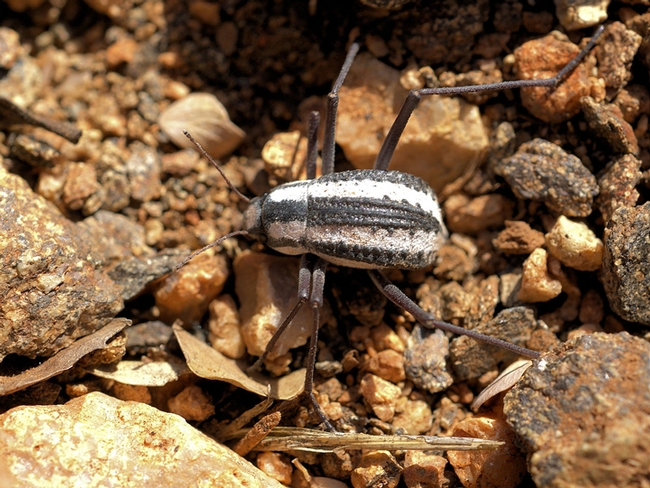
A Racing Stripe Darkling Beetle at Epupa Falls, Namibia. (Photo by Hans Hillewaert, Courtesy of Wikipedia)
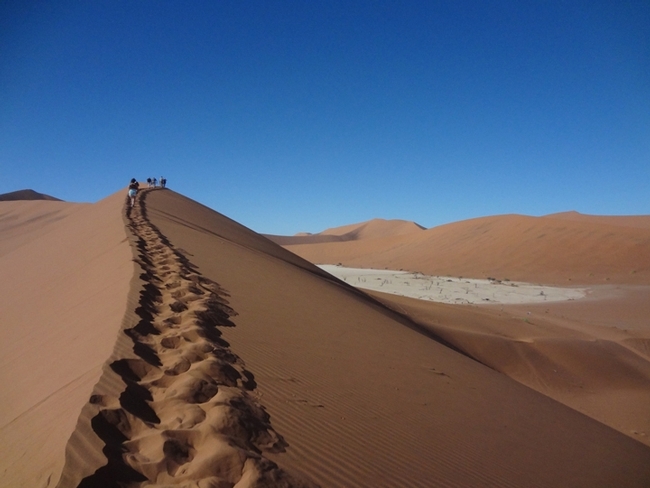
The world's second highest sand dune (Sossusvlei's Big Daddy). (Photo by Patty Carey)
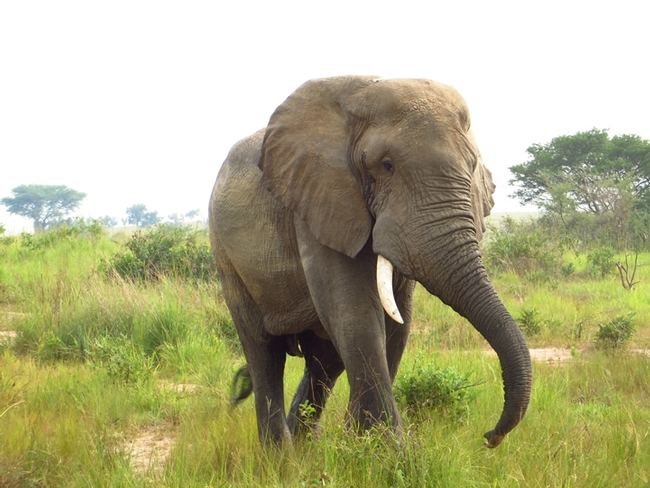
Entomologist James R. Carey also took an interest in elephants on his African Odyssey. This is an African elephant in Murchison Falls National Park, Uganda. (Photo by Patty Carey)
The Days of Bees and Roses
This weekend will be somewhat like "The Days of Bees and Roses." On Saturday and Sunday, May 2-3, the California Center for...
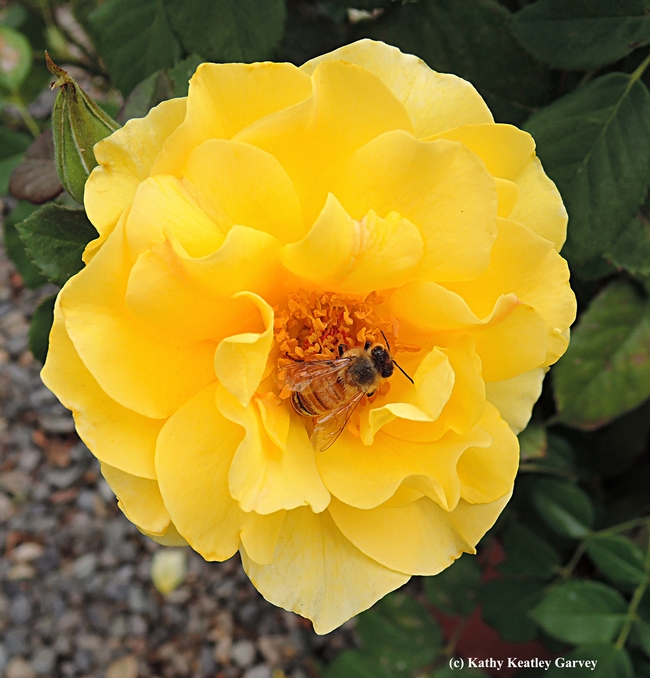
A honey bee foraging on a yellow rose purchased at the 2014 UC Davis Rose Days. (Photo by Kathy Keatley Garvey)
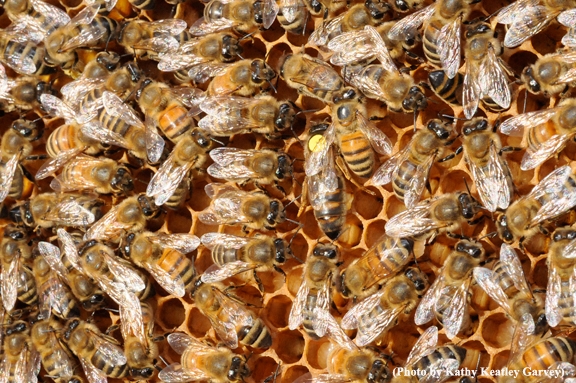
Visitors can see a bee observation hive on Saturday, May 2 at the Häagen-Dazs Honey Bee Haven during its fifth anniversary celebration. (Photo by Kathy Keatley Garvey)
Desert dwellers getting used to dry landscaping
"I don't think anybody realized how attractive it could be," said Stu Stryker, president of the homeowners association board.
Janet Hartin, UC Agriculture and Natural Resources Cooperative Extension advisor, said people in the Coachella Valley are getting used to the look of desert landscaping.
"A lot of people move here from Ohio, from Minnesota, from Florida, and they love the traditional green look … and they want to bring that image to the desert," Hartin said. "They're a harder sell. They'll walk through this park and think it's beautiful, but it doesn't look like home."
With good education and “a peek at some of their (rising) water bills,” she thinks most people will at least cut back on turf.
"This drought is one of the worst in modern history. We don't know whether it will continue or not — Mother Nature will let us know — but we have to assume it will," Hartin said.
Recent state water conservation mandates give additional incentive to replace turfgrass with rock, sand or gravel. Four of the Coachella Valley's five water agencies will be required by the state to shave off 36 percent of their 2013 water usage.
The Desert Sun also posted an article under Hartin's byline titled Ten ways to conserve water in your landscape. The article is accompanied by a video featuring Hartin describing many of her water conservation tips.
Bee All You Can Bee
Time to celebrate! The UC Davis Departmentof Entomology and Nematology has scheduled a fifth anniversary celebration...
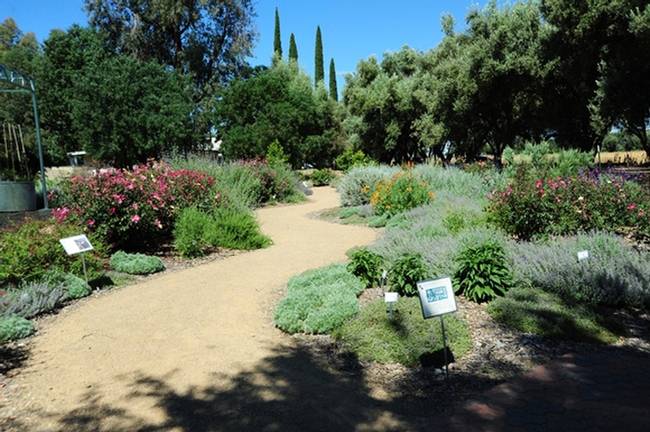
Several years after it was planted, the bee garden looked quite mature. This photo was taken May 22, 2012. This year it is five years old. (Photo by Kathy Keatley Garvey)



